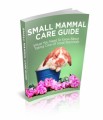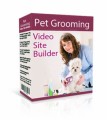 License Type: Giveaway Rights
License Type: Giveaway Rights  File Size: 2,814 KB
File Size: 2,814 KB File Type: ZIP
File Type: ZIP
 SKU: 55198
SKU: 55198  Shipping: Online Download
Shipping: Online Download
Ebook Sample Content Preview:
Chapter 3: Blogging
A third way to make money online is by blogging. Blogging is defined as continuously writing about a situation, event, or other interest and posting it online for others to read. If you can create quite a following with your blog, you can also create a decent income.
HOW TO GET STARTED
To create a blog that draws major attention and begin to draw money from it, here's what you need to do:
Step #1: Decide what you want your blog to be about. What topic or topics interest you most? Are you a car geek who knows everything and anything about the cars and trucks on the road today, or do you have an insatiable appetite for cooking and want to share your passion with others who feel the same?
Some of the most profitable niches and blog ideas are tech review blogs, beauty and fashion, health and nutrition, how to make money, or even teaching people how to blog! However, it is very important to only blog about things that you are genuinely interested in. Otherwise, you won't be able to engage other people in the topic if you have no interest in it yourself.
Once you have a list of options, pick a topic and tailor it down as specifically as you can to better resonate with your target market. For instance, if you enjoy cooking, what style speaks to you most? Are you a farm-to-table chef or do you like making traditional foods with a modern flair? The more specific you can make your topic, the easier it will be to reach the people you intend to reach.
To look for inspiration with this, check out related blogs that others are writing. This may help you come up with ideas for your own, in addition to helping you see what parts of their blog you like, and which ones you don't, making your blog easier for you to create, which is the next step.
Step #2: Create your blog. If you already have a blog in place, you are one step ahead of the game. If not, then you need to create one. You can do this by putting a blog page on your own website, or by joining a pre-existing blog platform, such as WordPress, that has easy-to-use themes that make setting up your blog a cinch.
Your number one priority is to come up with a domain name that suits you and is easy for your followers to remember and recognize. Something short and catchy will often do the trick, like 3 Fat Chicks who offer weight loss support or Dumb Little Man who provides tips about life. Also, don't try get too close to a well-known trademarked name in an attempt to get more followers or you could run into problems.
If you are setting up your blog on a self-hosting website such as Hostgator, Bluehost, or Dreamhost, all of which have packages for less than $10 per month, remember that .corn's often work the best as that is what most people are used to. At this point, .net is becoming more universal as well, so that is an option you may want to consider.
You also want to create a page that is pleasing to your target market and consistent with your brand. Choose colors and graphics that are representative of your style and topic, making it easy for your potential client base to tell who and what you are about at a glance.
Step #3: Start posting. The key to effective blogging is to create articles that your target market would want to read that contain keywords so you are easier to find. This involves creating a title that draws them in and writing a blog that engages interests, entertains, and benefits them in some way, while still making sure that each part of your blog has the keywords where they need to be. Also always format your articles to look appealing and to be easier to read.
You can either write these on your own or hire a ghostwriter to write them for you. If you choose a ghostwriter, one great platform to hire from is Elance. Each freelance writer is rated based on their past performance with previous clients, allowing you to pick the one that is best for you after reviewing their profile and job proposal on your specific project.
Don't be afraid to post videos or pictures on your blog either. People resonate with different types of material, so mix your blog up to suit most every type of reader or viewer and you'll have a larger impact, as well as a larger following.
One very important thing to remember is to post regularly. Get your readers used to seeing your name so they feel like you're a trusted friend and make them look forward to your posts, as if you are a part of their everyday life.
Some people choose to post on a specific schedule, like every Saturday morning at 8:00 AM. However, others post randomly and only when they have something to say. Find what works best for you and stick to it. I recommend that in the beginning you post as much as possible, without sacrificing quality of course. Aim at 2-3 times a week in order to build a larger following on your blog.
Step #4: Build your following by promoting your blog. Once you have some posts on your blog, now is a good time to promote it to build your following. First and foremost, you want to add the right keywords to your blog and the posts it contains so that your target market can easily find you when they do a search.
Second, you want to encourage them to follow your blog by offering a free download upon signing up, building your followers quicker and more effectively. Put a "Subscribe" button on it so that they can easily sign up to receive your posts as you make them (I recommend using AWeber.com or mailchimp.com for this purpose). Ask them to share them with their family and friends, who can then subscribe as well.
Step #5: Monetize your blog. Implementing what you've already learned about making money online in Chapter 1, your blog is a great place for affiliate marketing and CPC (Cost Per Click) ad networks like Google AdSense. Both of these options can draw in some good money if you have a huge following on your blog.
- File Size:2,814 KB
- License: Giveaway Rights
- Tags:2015 Ebooks Give Away Rights








